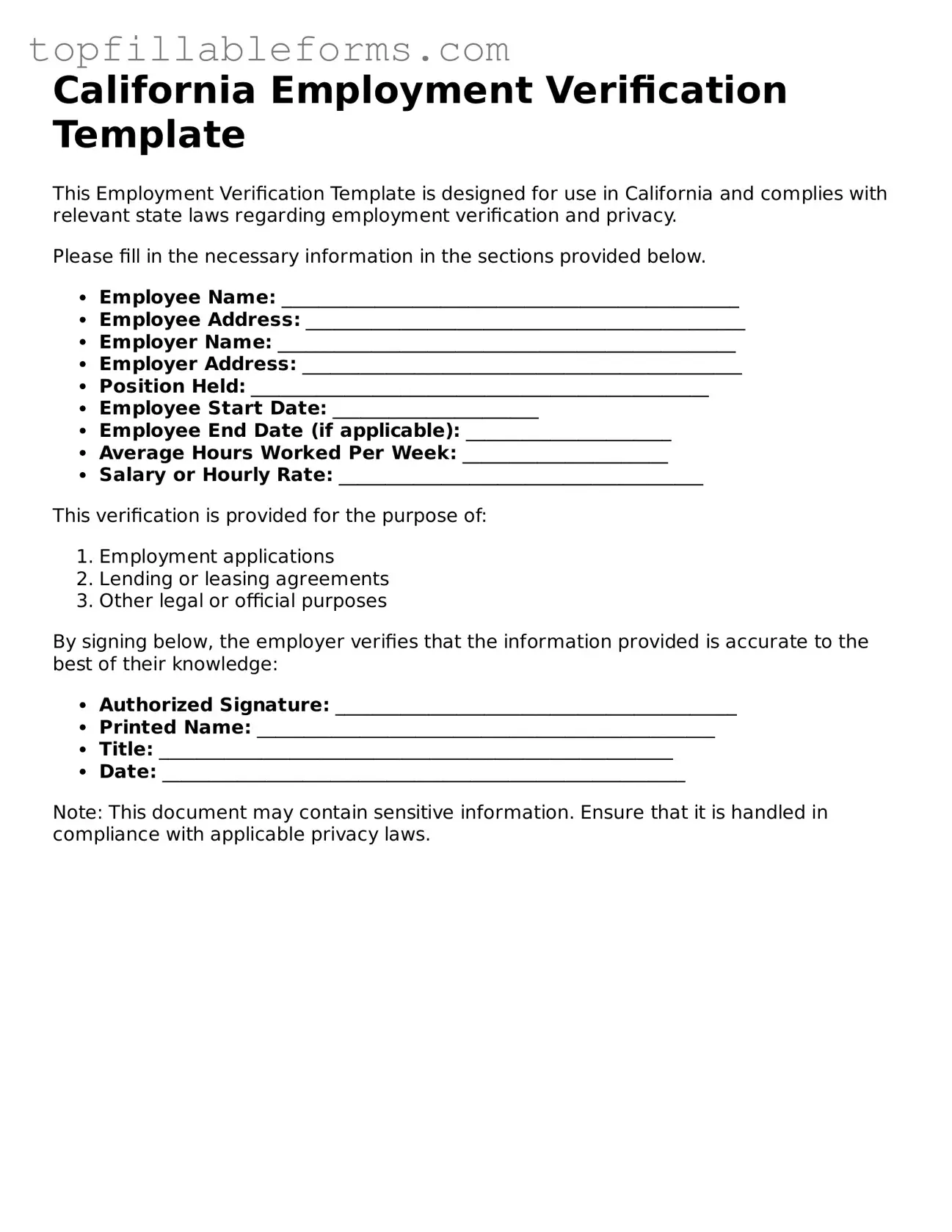California Employment Verification Template
This Employment Verification Template is designed for use in California and complies with relevant state laws regarding employment verification and privacy.
Please fill in the necessary information in the sections provided below.
- Employee Name: _________________________________________________
- Employee Address: _______________________________________________
- Employer Name: _________________________________________________
- Employer Address: _______________________________________________
- Position Held: _________________________________________________
- Employee Start Date: ______________________
- Employee End Date (if applicable): ______________________
- Average Hours Worked Per Week: ______________________
- Salary or Hourly Rate: _______________________________________
This verification is provided for the purpose of:
- Employment applications
- Lending or leasing agreements
- Other legal or official purposes
By signing below, the employer verifies that the information provided is accurate to the best of their knowledge:
- Authorized Signature: ___________________________________________
- Printed Name: _________________________________________________
- Title: _______________________________________________________
- Date: ________________________________________________________
Note: This document may contain sensitive information. Ensure that it is handled in compliance with applicable privacy laws.
